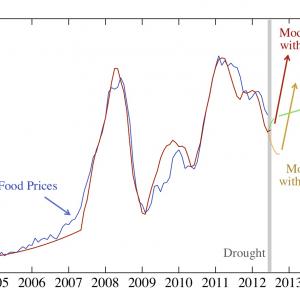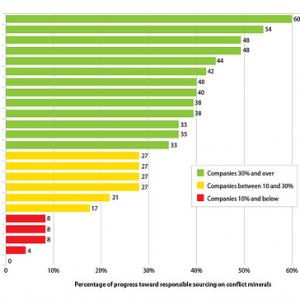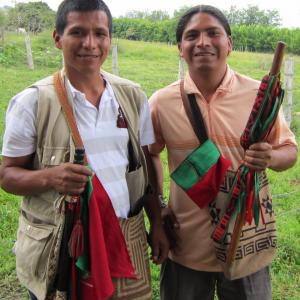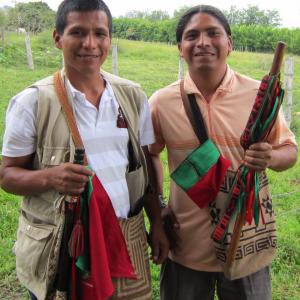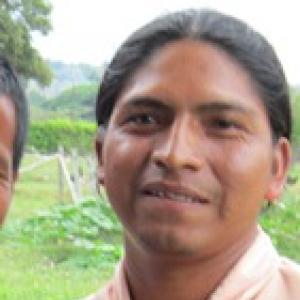
Elizabeth Palmberg is the daughter of one science fiction fan and one Presbyterian elder who is federally licensed to dispense medicinal marijuana (although she would like to point out that he, a glaucoma specialist, only prescribes it in the less than .1% of cases in which it works better than eyedrops). She grew up in St. Louis, MO and Miami, FL, with an older and younger sister, both of whom have waist-length hair.
Her long history of meddling with other people's writing began in her first weeks of college; she escalated from editing the papers of hapless friends to editing (as a tutor) the papers of people she didn't even know. Eventually, she went on to doctoral work in English at Cornell University, where the unsuspecting administration allowed her to teach a first-year writing seminar on "Scary Stories of the Nineteenth Century." While at Cornell, she dwelt in Flapdragon House, whose denizens enticed her into the shadowy underworld that is Lindy Hop. After seven years of "gradual school," she gained three letters to add to her name, and went off to teach for a year each at Kenyon College and Scripps College.
Although Victorian British literature is interesting, it turns out that social justice (particularly relating to economic globalization) is even more interesting. Ways in which people imagine economics kept winding their way into all her courses, including "Love Stories of the Nineteenth Century" and "The Clichés From Space: Gender and Science Fiction." In 2002, the Lord smote her upside of the head and instructed her to go seek a career working for a progressive Christian nonprofit.
She's found a home at Sojourners, first as an intern ("editorial assistant"), and now as an assistant editor. She's enthusiastic about (in descending order) Jesus, Sojourners' switch to monthly publication, and bittersweet chocolate.
Elizabeth Palmberg died peacefully in her sleep at her home in Washington, D.C., on the morning of June 23, 2014. Per her wishes, memorial donations in her name may be made to any of the following: Christ House (1717 Columbia Rd NW, Washington, DC 20009); St. Stephen and the Incarnation Episcopal Church (1525 Newton Street NW, Washington, DC 20010); Sojourners Internship Program (PO Box 70730, Washington, DC 20024-0730) .
Posts By This Author
Works of Economic Fiction
"The Fatherless series" (book one and two)
JAMES DOBSON and Kurt Bruner get three things right in their recent novels Fatherless and Childless: Euthanasia is wrong, married couples should make time to have hot sex, and stay-at-home moms should get some respect.
Pretty much everything else in the novels, the first two-thirds of a trilogy (book three, Godless, is due out in May 2014), is way off and internally incoherent. The plot starts in 2042, when an aging population and economic malaise have motivated the government to legalize euthanasia. Businessman Kevin Tolbert, recently elected to Congress, lectures his peers about the need to stop euthanasia and encourage parenthood in order to revive the economy. His wife Angie’s high school friend Julia Davidson, an allegedly progressive and feminist reporter, is assigned to write a story about him (lecture alert). Meanwhile Kevin and Angie struggle (with mercifully few lectures) with their third child’s diagnosis of Down syndrome. Subplots deal with a disabled teen and an elderly dementia victim who turn (or are pushed) to euthanasia.
Actual euthanasia, as disability-rights groups such as Not Dead Yet have documented, often turns on society defining “dignity” according to physical ability and health instead of the innate value of a human being. These novels, however, ask us to believe the main impetus for euthanasia would come from the drive to reduce the federal deficit, to deal with “swelling entitlement spending.”
What spending? The novels’ elderly and disabled characters are drawn or pushed toward euthanasia because of family financial troubles: There is no mention of any Social Security, Medicare, or Medicaid help going to any of them.
And Now for Something Different
"The Woman Who Died A Lot"
WHEN A COLLEAGUE told me Sojourners had received a review copy of the latest Thursday Next novel by Jasper Fforde, I was delighted—and confused. My delight came because I’m a huge fan of the series, whose protagonist Thursday lives in an alternate-reality U.K. and, in previous novels, has worked for Jurisfiction, the policing agency within fiction. My favorite scene was when, several novels back, she helped Great Expectations’ Miss Havisham moderate an anger management group in Wuthering Heights, set up to keep it from going the way of “that once gentle comedy of manners, ‘Titus Andronicus.’”
However, it was unclear why anyone would send a book from this series to a Christian social justice-oriented magazine. My best guess, as I gleefully devoured The Woman Who Died A Lot, was that some hilariously over-optimistic publicist thought we’d be interested in the novel’s subplot in which God reveals Godself by smiting various cities with columns of fire—sometimes in response to sin, sometimes to “unimaginative architecture, poor restaurants, or even an overly aggressive parking fine regime.” Thursday’s hometown of Swindon is next on the smite list, possibly to increase God’s bargaining position against the locally based Global Standard Deity church. The GSD, having unified the world’s religions, plans to use its “collective bargaining powers” to open formal negotiations with God, starting with the question, “What, precisely, is the point of all this?”
If I were Brian McLaren, I could no doubt get mileage out of this negotiating-with-God idea, and out of the novel’s various speculations about whether notbelieving might make God (or, in a separate subplot, an asteroid hurtling toward the Earth) cease to exist. Other storylines—a villain who can alter memories convinces Thursday she has an extra child; Thursday’s teenage son Friday is apparently fated to murder someone who may or may not be an irredeemable louse—could, at a stretch, fuel theological debate about identity or free will.
Take This Cup — For Real, TAKE It
So you’ve heard the flu shot is somewhat ineffective this year, and, though you have a normal immune system, you don't want to take the Eucharist from a common chalice.
Part of me kind of wants to slap you.
Obviously, that's not what Jesus would do. We know what Jesus did — he offered you his lifeblood, saying "This is my blood of the covenant, which is poured out for many." Ever after, Christians have taken wine and bread, a sacrament which binds us together in communion with other Christ-followers around the globe and through two millennia.
For the last few months, because my cancer treatment had decimated my immune system, I haven't been able to drink from the common chalice (or to eat most raw food, go to the movies, or get on the bus without a face mask). I really miss it. So I want to share two key insights I’ve had about the common Eucharistic cup.
Mind and Body
An extended interview with addiction-recovery worker Jim Balmer
An extended interview with addiction-recovery worker Jim Balmer
Six Questions for Frank Mugisha
Frank Mugisha, executive director of Sexual Minorities Uganda
Bio: Executive director of Sexual Minorities Uganda, which works for full legal and social equality in the country, and recipient of the 2011 Robert F. Kennedy Human Rights Award. www.sexualminoritiesuganda.net
1. What’s your response to the letter U.S. religious leaders signed last year, which condemned the “Anti-Homosexuality Bill” before Uganda’s Parliament because it “would forcefully push lesbian, gay, bisexual, and transgender (LGBT) people further into the margins”?
Uganda is a very Christian country. About 85 percent of our population is Christian—Anglican, Catholic, and Pentecostal. So for religious leaders to speak out against the Ugandan legislation, that is very important for me and for my colleagues in Uganda, because it speaks not only to the politicians and legislators, but also to the minds of the ordinary citizens.
It is very important to have respected religious leaders involved, including Archbishop Desmond Tutu, because these are leaders who have spoken out on other human rights issues such as apartheid, women’s rights, and slavery. And for us, for the voice of LGBT rights, to join with these other issues clearly indicates that our movement is fighting for human rights.
Across the Board, Peace
Interview with Jim Balmer, an antiwar activist whose commitment to nonviolence has made him an advocate for a consistent ethic of life
JIM BALMER, president of an addiction-recovery center called Dawn Farm in Ypsilanti, Michigan, has been an antiwar activist since the Vietnam days. His engagement with nonviolence has taken him to some unexpected places, from the antiabortion group Operation Rescue to working with addicts. Sojourners associate editor Elizabeth Palmberg interviewed Balmer early last year at the Consistent Life conference in Washington, D.C.
Elizabeth Palmberg: What was your work for peace during the Vietnam war?
Jim Balmer: I had been part of Detroit-area draft resistance. I went through almost all the conscientious objector status [process]. And it was 1970—what can I tell you? I was under the influence of substances one night, and I wrote the draft board in Pontiac, Michigan, and told them off; I just said, "come and get me." They never did. I suspect that, as the '70s progressed, they got more and more tired of putting us in jail.
The Detroit-Ann Arbor area was a hub for political activism. Students for a Democratic Society was founded there. YPFJ—Youth for Peace, Freedom, and Justice—there were all sorts of organizations. We would protest. The first time I got actually picked up was at a George Wallace rally—Wallace was a terrible, racist candidate from Alabama.
I started being interested in nonviolence. I was reading Mohandas Gandhi and Martin Luther King Jr., and I took King's nonviolence pledge when I was in high school.
The Marrow Road
I've been thinking, as Advent goes on, what it meant for God to lay aside infinity and put on a body that was not just tiny, inarticulate, and helpless, but also already marked, to the marrow of its little bones, with the seeds of death.
He must have felt in his own flesh this dramatic comedown — from omnipotence and omnipresence to a being that had about threescore and 10, max, even if it hadn’t going to be cut off halfway by self-sacrifice and Roman capital punishment. And that must have given Jesus infinite tenderness and patience towards the waves and waves of people who, during his short ministry, were always coming up to him and asking, directly or just by their presence, for him to heal their bodies. In Luke, the Gospel focus of the new liturgical year, there are more than 20 healings by my count, compared to two times when someone asks Christ how to get eternal life (and only one of them actually wanted to know).
Those healings of all those bodies matter, millennia later. One big reason they matter is because healing matters. Another is because, by showing God's power over death as well as by going through death ahead of us, Christ teaches us not to be dominated by fear of it.
Effective Sweat-Equity Rural Housing at Risk
A low-cost, highly successful rural housing self-help program is at risk from both sides of the aisle. A year ago, the Sojourners article Seven Ways Home described:
the “mutual self-help” model, where families in rural America first qualify for a mortgage, then partner with seven to 11 other families who will all build their homes together.
The model first gained prominence in the Central Valley of California in the 1960s through the work of the American Friends Service Committee (AFSC). The Quaker group had listened to the housing dreams of migrant farm workers, many of whom lived in squalid conditions—30 families might share one rusty faucet. In response, AFSC offered the mutual self-help model: Families would work together to build their homes, with no one moving in until all the homes were completed. This built community as well as housing. The success of this model inspired the formation of Self-Help Enterprises, based in Visalia, California, which has helped more than 5,000 families build homes. The model has been so successful that today some self-help housing is sponsored by the USDA’s Rural Development program.
Now, the Daily Yonder reports that the program is under threat:
Self-Help Housing is unique among the panoply of federal programs. Under it, nonprofit housing developers provide training, technical assistance and close supervision to small teams of future owners who build their own homes. Each family invests roughly 1,200 hours, creating what's known as "sweat equity." Construction professionals do the rest. 502 direct loans finance the debt.
The average annual income of participant families is $27,000. Most are minorities. Their repayment record is better than higher income families.
The key to this success story is the assistance provided to participant families by nonprofits. But instead of increasing funding — or at least holding funding level — the Obama administration’s FY 2013 budget reduces funding for these groups by two thirds..
The House version cuts this program by half.
This classic, highly effective pairing of citizen initiative with governement aid shouldn't be undermined by short-sighted cuts.
Elizabeth Palmberg is an associate editor of Sojourners magazine.
Red-Tape Bill Threatens Financial Reform
OMB Watch reports that the lame-duck Senate may move forward on a bill that could hamstring the SEC as it works to fight fraud and implement financial regulatory reform, tying up the agency in needless red tape and lawsuits:
A pending anti-regulatory bill that targets independent regulatory agencies would significantly curtail the Securities and Exchange Commission's (SEC) ability to protect investors from financial fraud and other economic hazards. The Independent Agency Regulatory Analysis Act of 2012 (S. 3468) would require independent agencies to conduct formal cost-benefit analyses for all significant rules and would allow the Office of Information and Regulatory Affairs (OIRA) to review those analyses. This would cause lengthy delays in implementing the financial oversight contained in the Dodd-Frank law. The Senate Committee on Homeland Security and Governmental Affairs (HSGAC), chaired by Sen. Joe Lieberman (I-CT), may mark up this bill during Congress’ upcoming lame-duck session, even though no hearings have been held on the bill.
The bill would also hamper the essential work of the FDIC, the Commodities Futures Trading Commission, and other government watchdog agencies.
Elizabeth Palmberg is an associate editor of Sojourners and tweets @ZabPalmberg.
Spirituality from Plant to Plate
For World Food Day, here’s a roundup of recent Sojourners magazine articles about food, a subject with tendrils throughout our lives and world—from field to farmworker to plate to body!
What Are We Trading Away?
When the U.S. is negotiating a mammoth, powerful international trade agreement, what do negotiators do when faced with tradeoffs between commercial interests in the U.S. and other U.S. values—such as human rights, preserving the planet we all have to live on, and helping the poor?
That’s the question I asked Carol Guthrie, Assistant U.S. Trade Representative for Public and Media Affairs, last weekend at the Leesburg, Va., resort where the next big thing in trade negotiations—the Trans Pacific Partnership (TPP), basically NAFTA for the Pacific Rim—was taking shape in its 14th round of negotiations.
Many parts of civil society, from the Sierra Club to the Columban Fathers, argue the TPP would have profound negative effects on the environment, public health, human rights, internet freedom, and the global poor, among other things. A number of civil society groups showed last Sunday in Leesburg, where they could sign up for a chance to speak to negotiators—but not, unlike around 600 mostly-corporate insiders, to see the actual text being negotiated. (Members of Congress reportedly are allowed to see the text—but, unlike the insiders, not to download a copy, take notes, or bring an expert staffer with them).
Food Price Crisis Worse Than 2008 Predicted
The advocacy group Stop Gambling on Hunger reports world food prices are predicted to rise sharply in the coming months, due partly to speculation:
"The New England Complex Systems Institute, [which has] developed a quantitative model able to very closely predicted the FAO’s food price index, released a new report predicting sharply higher food prices due in part to excessive speculation.
"Their model, originally released in September 2011 matched the FAO’s index from 2004 to 2011. Since then it has continued to closely follow the real world numbers.
"Unfortunately, the model now predicts, 'another speculative bubble starting by the end of 2012 and causing food prices to rise even higher than recent peaks.'
"While the researchers acknowledge that the drought in the Midwest U.S. will cause prices to rise, their model shows that excessive speculative activity will have an even larger effect. Though some key financial reforms passed in 2010 may finally begin to be implemented in early 2013, that may be too late to avoid the coming price bubble."
Read the rest of the article here.
Conflict Minerals Report Card
As conflict, rape, and other human rights abuses continue in eastern Congo, armed groups are still funding themselves with conflict minerals — gold, tin, tantalum, and tungsten — which are often used in the manufacture of cell phones, computers, and other electronics. Now advocacy group The Enough Project has issued a new report card about how well different corporations are doing at cleaning up their supply chain to avoid contributing to violence.
Some companies, such as Intel and HP, are doing much better than others — get an ethical clue, Nintendo! — but everyone has some room for improvement.
See the rankings here or take in the chart-at-a-glance here.
How To Reclaim A Rigged Economy
"99 to 1: How Wealth Inequality is Wrecking the World and What We Can Do About It" by Chuck Collins
CHUCK COLLINS’ new book does exactly what an introduction to wealth inequality and all its faults needs to do: summarize without oversimplifying, and provoke dialogue and action about the urgent problem of what Collins memorably dubs the U.S.’s “inequality death spiral.”
Newcomers to the topic will find a concise overview of how wealth inequality has skyrocketed since 1980, how a small elite has changed the rules to enable still higher inequality, the many seen and unseen ways that’s a problem for us all, and the beginnings of a solution. Those more familiar with the subject can benefit from Collins’ overview, well-selected statistics, and well-honed, direct turns of phrase. Those who want deeper reading will find excellent footnotes at the end of the slim volume. Everyone will find her experience livened by the stark words Collins quotes from people identifying as part of the 99 percent—and those who are part of the 1 percent.
Collins’ many years as an advocate against inequality show in the book’s graceful balance: It emphasizes the usefulness of the 99 percent-vs.-1 percent idea, while also making clear that neither side is monolithic. He acknowledges very real economic, class, and racial divisions among the 99, but makes a compelling case against letting those differences be the basis of divide-and-conquer political strategies: “It is important that the 99 percent see that they have some important common ground, rather than be peeled into a hundred subgroupings.” And Collins, who himself grew up in the 1 percent, refuses to demonize it or to accept the demoralizing falsehood that it is unified against those below. Rather, he quotes multiple allies within the economic elite, while decrying how “a small segment of the 1 percent—with an organized base in Wall Street’s financial institutions—has worked over many decades to rig the rules of the economy” in the areas of “taxation, global trade, regulation, and public spending.”
Colombian Indigenous Elders Try Alleged Guerrillas
More about the efforts of the Nasa people in Cauca, Colombia to free their territory of armed actors:
"Indigenous leaders in Colombia's conflict-scarred southwest say they will put on trial before tribal elders four alleged leftist rebels they accuse of attacks on civilians."
"Nasa Indian leader Marcos Yule tells The Associated Press the four could face such punishment as floggings or exile if convicted in this weekend's trials."
"The 115,000-strong Nasa say they are fed up with being in the crossfire of Colombia's long-running conflict. They have been trying since last week to force government troops and leftist rebels to leave their territory."
The rest of the short news item is here.
Daily Peacemaking: an Interview with the Indigenous Peacemakers of Cauca (Part II)
Activists from Colombia’s indigenous Nasa people continue to make headlines — but there’s far more to their peacemaking than the occasional story that makes the U.S. news. Here’s part II of the interview I did with two Nasa Indigenous Guard members, Manuel and Herman, in Cauca, Colombia, last August. The interview took place a month after an earlier round of violence: a bus bomb, suspected to be from the FARC, that went off in the town of Toribío, killing three and wounding more than a hundred in July 2012.
Sojourners: What’s it like to be in the Indigenous Guard?
German: Being an Indigenous Guard is very risky. Obviously there are moments of conflict in which you know what you’re facing -- then there are moments of apparent calm, but calm can switch into situations of risk very quickly.
‘We Believe in Our Communites’: an Interview with the Indigenous Peacemakers of Cauca, Colombia
The photos from rural Cauca, Colombia are so dramatic they’ve repeatedly made the international news: indigenous Colombian activists--bearing sticks, community spirit, and a whole lot of moxie--demanding that heavily-armed FARC guerrillas and government armed forces alike leave their territory. As the war between the FARC and the government heats up again in Cauca, civilians are — as usual — getting caught in the crossfire; the town of Toribío has been attacked 14 times this year, according to the BBC.
In response, Nasa activists last week shouted FARC guerrillas from their roadblocks back into the jungle, overran a hilltop government military outpost, and booed Colombian President Manuel Santos when he went to Toribío to hold a saber-rattling emergency cabinet meeting. (Yesterday, government forces used tear gas to drive out activists and re-occupy the post).
Last summer, in Cauca with Witness for Peace, I was able to interview two of those activists, members of the Indigenous Guard formed by the Nasa ethnic group. The Indigenous Guard , armed only with beribboned ceremonial staffs of office, has been standing up against armed groups for years--for example, marching into the jungle to successfully demand the release of Toribío’s mayor when the FARC abducted him in 2004. What empowers these activists? Here’s what I learned last year from two Indigenous Guard members, Manuel and German (as translated by Witness for Peace Associate Director Jess Hunter-Bowman)
Colombian Indigenous Peacemakers Put the "Active" in "Activist"
In an Indigenous region of Colombia's Cauca province, activists armed with ceremonial wooden staffs, moral authority, and *lot* of moxie are telling both government armed forces and guerrillas to get out of their territory. In the face of an upsurge in guerrilla-vs.-state violence, Colombian President Manuel Santos made a saber-rattling visit to the town of Toribío to hold an emergency cabinet meeting there, but indigenous activists from the Nasa ethnic group--all too aware that government troops' presence in civilian areas can paint a target on them--were not impressed with Santos' offer of more of the same.
“The military can’t protect us and the guerrillas don’t represent us,” [Indigenous Guard leader] Mensa said, as he cradled the tasseled staff that identifies the volunteer guard. “All of them need to leave this area and let us live in peace.”...
"Even before Santos had finished the emergency meeting, the community had decided to take matters into its own hands. One group confronted the FARC at the roadblocks and another walked more than two hours to a barren mountaintop army battalion that overlooks Toribío.
"After a short standoff with troops, about 200 people swarmed the base and began toppling sandbagged bunkers and filling in foxholes."...
"At the FARC roadblocks, villagers shouted the guerrillas back into the jungle and seized five homemade mortars, called tatucos..."
Read more from the Miami Herald.
When I visited Colombia last summer, I interviewed two members of the Indigenous Guard for an article for Sojourners magazine, and was deeply inspired by their commitment, strategy, and guts.
Irony Behind Florida Governor's Medicaid Call
Florida governor Rick Scott says he won't take the federal money that would enable Medicaid to be expanded in his state, The Nation's blog reports:
"Nearly 1 million Floridians will be denied access to Medicaid they would have otherwise received under the Affordable Care Act if Governor Rick Scott gets his way. The Supreme Court ruling last week on the law made it easier for states to opt out of an expansion, and Sunday night the governor’s office e-mailed a statement from Scott that 'since Florida is legally allowed to opt out, that’s the right decision for our citizens.'”
This choice is particularly ironic, given that Scott was CEO of Columbia/HCA in the 1990s: that company was found to have defrauded Medicare on his watch. Eventually the company pled guilty to 14 felonies and paid fines of $1.7 billion. Scott denied knowing what was going on when he was in charge of the company. As the Miami Herald reported:
"He has denied knowing frauds were taking place while he was there, and he was never charged with any crimes.
"However, federal investigators found that Scott took part in business practices at Columbia/HCA that were later found to be illegal -- specifically, that Scott and other executives offered financial incentives to doctors in exchange for patient referrals, in violation of federal law, according to lawsuits the Justice Department filed against the company in 2001."
On a Firm Foundation
Resources to help you raise happy and engaged kids
Sidebar to "Breaking the Bubble Wrap"





